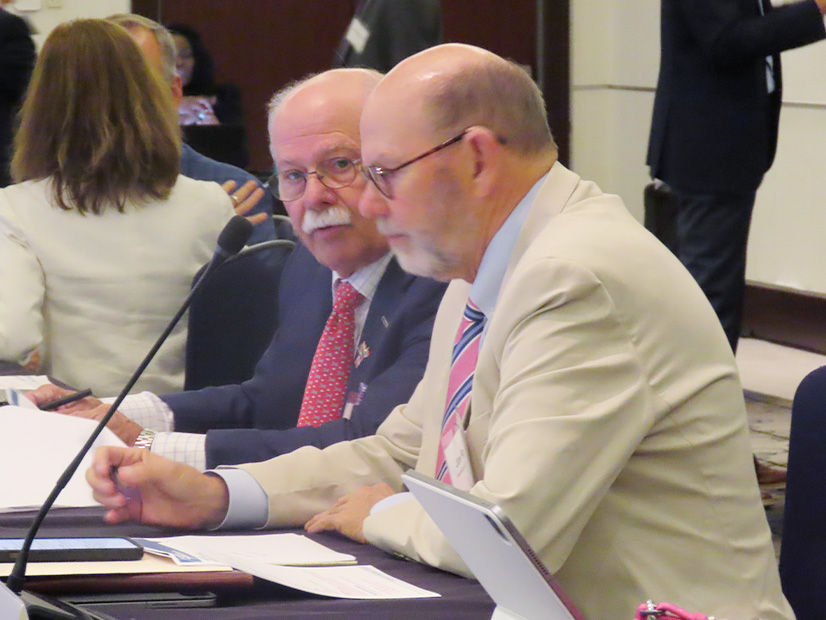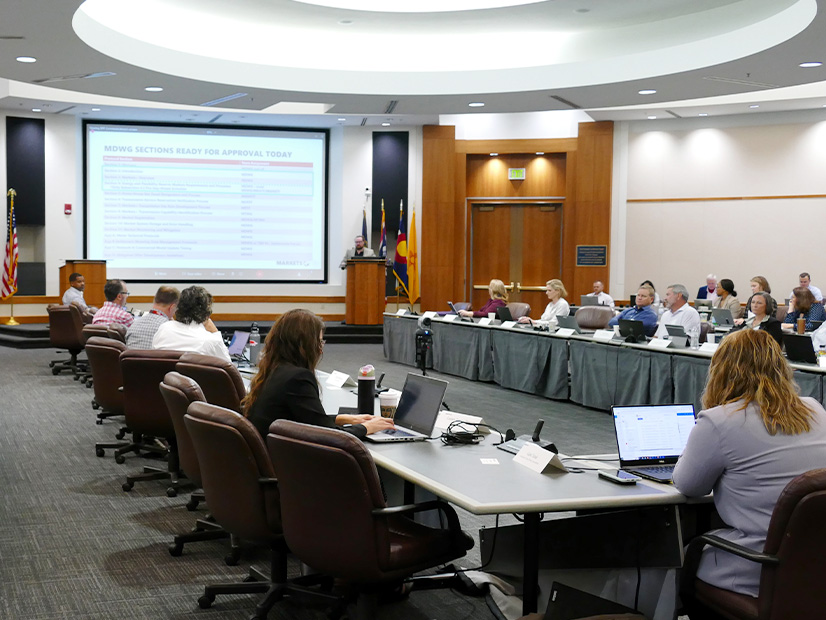Protecting the public interest while implementing the Extended Day-Ahead Market (EDAM) and expanding the Western footprint was central to the discussion in a West-Wide Governance Pathways Initiative workshop Aug. 15.
“How are we going to continue to serve the public interest with an expanded footprint and with alternative, different governance?” Alice Reynolds, president of the California Public Utilities Commission, asked.
Members of the launch committee sought feedback on a combination of tools that could protect the public interest across the footprint of the regional organization (RO) the Pathways Initiative seeks to establish.
Beyond regulation by FERC, members discussed five main components that could be integrated into the structure of a new RO, including a stakeholder process, an independent market monitor, consumer advocate engagement, a states committee and an RO board.
In the implementation of an RO board, members emphasized public interest protection language in the articles of incorporation and the charter provisions. Also deemed important: a commitment to expand public benefits by attracting new participants, protecting individual state and local generation preferences and climate policies, holding open meetings and adhering to open records requirements.
Board members should have a history of protecting the public interest in their official roles, said Ben Otto, consultant with NW Energy Coalition and a launch committee member.
“There can be standards of duty for the board that are incorporated, like they have to act to protect public interest, and that is then their obligation when they’re acting as a board member, to follow those requirements and not their own wishes,” Otto said.
The RO also could establish a states committee that would maintain the current Western Energy Imbalance Market Body of State Regulators structure with a charter requiring protection of the public interest. Under this structure, states individually or through the committee could continue to submit 206 pleadings at FERC.
Other aspects of the committee would be having access to market monitor data, having the power to originate a stakeholder initiative with support from half of the participating states or half the load, having a seat on the RO board, and having veto rights over RO board nominations with a two-thirds vote of states and load. A subset of the committee representing one-quarter of states or load could vote to trigger a requirement for a supermajority vote on a particular topic.
Consumer advocates also could play a role by participating in stakeholder processes, having access to market monitor data and obtaining a seat on the RO board.
“This is absolutely necessary to ensure that the board is well informed on consumer issues. Being informed on consumer issues, we think, is key to fulfilling the public interest mission that we’ve laid out here in Pathways,” said Michele Beck, director at the Utah Office of Consumer Services and a member of the launch committee.
Individual consumer advocate offices aren’t resourced enough to participate in these processes, Beck said, creating the need for a central consumer advocate organization that could maintain interaction with RO processes. Launch committee members suggested the creation of a 501(c)(3) organization that could facilitate consumer advocate participation. Beck highlighted the Consumer Advocates of the PJM States (CAPS) program as an example worth replicating.
Launch committee members also highlighted other existing structures within the CAISO model that could be carried forth in the new RO, including the ISO’s Department of Market Monitoring and Market Surveillance Committee.
Additional ‘Tools in the Toolbox’
Stakeholders provided additional ideas for protecting the public interest.
“One other tool that we should have in the toolbox for protecting the public interest is really allowing and enabling the public to participate in our decision making to the extent that it’s appropriate,” said Mark Specht, Western states energy manager at the Union of Concerned Scientists and a member of the launch committee. “Things we might consider would be creating some sort of office of public engagement that would really serve as a resource for folks who are interested in participating and having their voices heard in our decision making.”
Preserving state and local autonomy within regions also was a primary point of conversation given the different laws, policies and preferences within each state.
“We’ve really been thinking about, how do we create a system that explicitly acknowledges and protects the ability for states to keep that authority in place and enables states to really develop their own vision of what the public interest is?” said Kathleen Staks, executive director of Western Freedom and co-chair of the Pathways Initiative. “What tools holistically across the entire regional organization ensure that the regional organization protects the public interest in lieu of a single state statutory requirement like we have with the CAISO today?”
Commissioner John Hammond of the Idaho Public Utilities Commission echoed concern over the challenge of defining the public interest given the array of different players.
“There are obviously common interests in keeping costs low and in reliability, but I worry about when we start getting into policy areas and what impacts that might have on the individual states that have different policies,” Hammond said. “My fear is you start incorporating too many things in the toolbox, you might get a reaction legislatively from particular states … so I think it’s very important that we define exactly what public interest we are trying to protect.”


